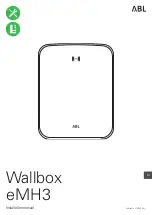
Torque Converter Clutch
A feature designed to improve fuel
economy has been included in the au-
tomatic transmission on your vehicle.
A clutch within the torque converter
engages automatically at calibrated
speeds. This may result in a slightly
different feeling or response during
normal operation in the upper gears.
When the vehicle speed drops or dur-
ing some accelerations, the clutch au-
tomatically disengages.
NOTE: The
torque
converter
clutch will not engage until the
transmission fluid and engine
coolant are warm [usually after 2
to 5 km of driving]. Because the
engine speed is higher when the
torque converter clutch is not en-
gaged, it may seem as if the trans-
mission is not shifting into Over-
drive when cold. This is normal.
Using the Electronic Range Select
(ERS) shift control, when the
transmission is sufficiently warm,
will demonstrate that the trans-
mission is able to shift into and out
of Overdrive.
DRIVING ON SLIPPERY
SURFACES
ACCELERATION
Rapid acceleration on snow covered,
wet, or other slippery surfaces may
cause the driving wheels to pull errati-
cally to the right or left. This phenom-
enon occurs when there is a difference
in the surface traction under the front
(driving) wheels.
WARNING!
Rapid acceleration on slippery sur-
faces is dangerous. Unequal trac-
tion can cause sudden pulling of the
front wheels. You could lose control
of the vehicle and possibly have a
collision. Accelerate slowly and
carefully whenever there is likely to
be poor traction (ice, snow, wet,
mud, loose sand, etc.).
TRACTION
When driving on wet or slushy roads,
it is possible for a layer of water to
build up between the tire and road
surface. This is known as hydroplan-
ing and may cause partial or complete
loss of vehicle control and stopping
ability. To reduce this possibility, the
following precautions should be ob-
served:
1. Slow down during rainstorms or
when roads are slushy.
2. Slow down if the road has standing
water or puddles.
3. Replace the tires when tread wear
indicators first become visible.
4. Keep the tires properly inflated.
5. Maintain sufficient distance be-
tween your vehicle and the vehicle in
front of you to avoid a collision in a
sudden stop.
DRIVING THROUGH
WATER
Driving through water more than a
few centimeters deep will require ex-
tra caution to ensure safety and pre-
vent damage to your vehicle.
238
Содержание Voyager 2013
Страница 1: ...Owner Handbook...
Страница 3: ......
Страница 6: ......
Страница 8: ...2...
Страница 13: ...7...
Страница 74: ...68...
Страница 105: ...99...
Страница 106: ...100...
Страница 107: ...101...
Страница 166: ...160...
Страница 172: ...INSTRUMENT CLUSTER GASOLINE 166...
Страница 173: ...INSTRUMENT CLUSTER DIESEL 167...
Страница 266: ...260...
Страница 286: ...280...
Страница 337: ...331...
Страница 338: ...332...
Страница 347: ...9 INDEX 341...
Страница 357: ...Notes...
Страница 359: ......
















































